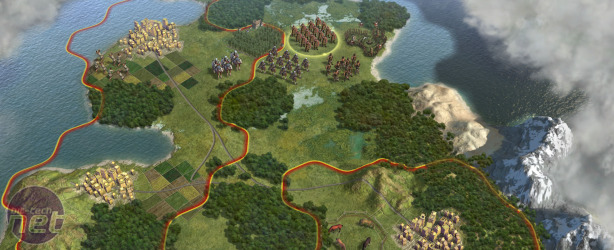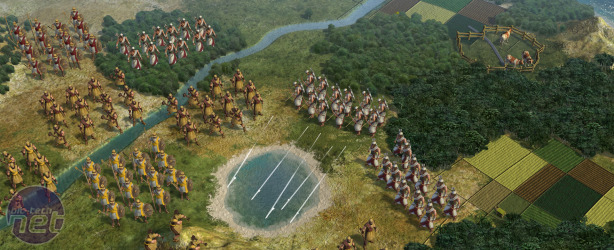Civilization 5 Preview
Balancing issues have come hand-in-hand with the removal of military stacking however, meaning that units in Civilization 5 now take much longer to produce than they have in previous games. More value is thus placed on individual soldiers, which means players are more likely to protect their men since they are a more scant resource.Previously we mentioned how we often found ourselves growing oddly protective over our cities in Civilization – this is the first game in which we regularly built a similar attachment to our soldiers. That probably says a lot about how misanthropic and grumpy we are.
Unfortunately though, the balancing is occasionally schizophrenic and there are a few instances where Firaxis’ tweaks don’t quite line up with each other. No stacking? Fine. Units take longer to make? Fine. Cities can now bombard nearby units? Um…
Laying waste to enemy cities is now a much more complex task than ever before as, not only do you churn out units and need to place them over larger areas, but doing so makes them easy pickings for ballista equipped. The over-hyped move to a hex-based map means that you need more units than before to even form offensive lines or surround cities too, compounding the problem and making assaults much more of a risky business.
Thankfully, the logic-knife cuts both ways – higher-tech units can retaliate by attacking at range too, rather than just drawing the short straw in games of City Target Practice. Artillery and ranged combat plays a big part in Civ 5, especially in the later stages of gameplay where most civilisations have successfully researched modern military technologies.
The new emphasis on ranged combats and grand-scale combat doesn’t at all detract from Civ 5’s attention to minutiae though – knowing how to use the geography to your advantage can still make a big difference, for example. At higher difficulty levels you’ll need to factor in all sorts of things before you make a grab for an enemy capital, from how many rivers your infantry will need to cross to what bonuses a unit might work for or against you on hilly terrain.
This does bring us to Civilization’s single biggest weakpoint though, which is the sometimes overwhelming complexity and depth of its systems. There’s often so much to consider that even a seasoned pro might forget something, losing ground over technicalities. Civ 5’s ‘civopedia’ and tutorial systems look set to help address these problems, but in the build we played they weren’t much help. Finding out what’s changed compared to previous Civ games is difficult enough, but the sheer amount of info would be enough to make a grown librarian cry.
That said, it’s worth pointing out that the build we’ve been playing is definitely still far from release-ready, as evidenced by the plethora of graphics bugs and glitches which plagued our time with the game. At least, it better not be considered release-ready…
Civilization 5 will have to tread a fine line as it nears release later this year; deviate too far from the classic formula that has defined Civ and fans will be put off, change too little and well, why even bother? It’s not as if Civ would really benefit from a graphical overhaul.
From what we’ve seen so far Civ 5 is managing to walk that line well enough to satisfy both parties, stumbling only on a few minor issues. As we draw ever closer to the release date it’ll be interesting to see how Firaxis and 2K decide to further tweak one of the most beloved PC series ever created, because even in a single error could easily be enough to push fans back to Civ 4.
Sid Meier’s Civilization 5 will be released on PC at the end of September 2010 and will be published by 2K Games.

MSI MPG Velox 100R Chassis Review
October 14 2021 | 15:04












Want to comment? Please log in.